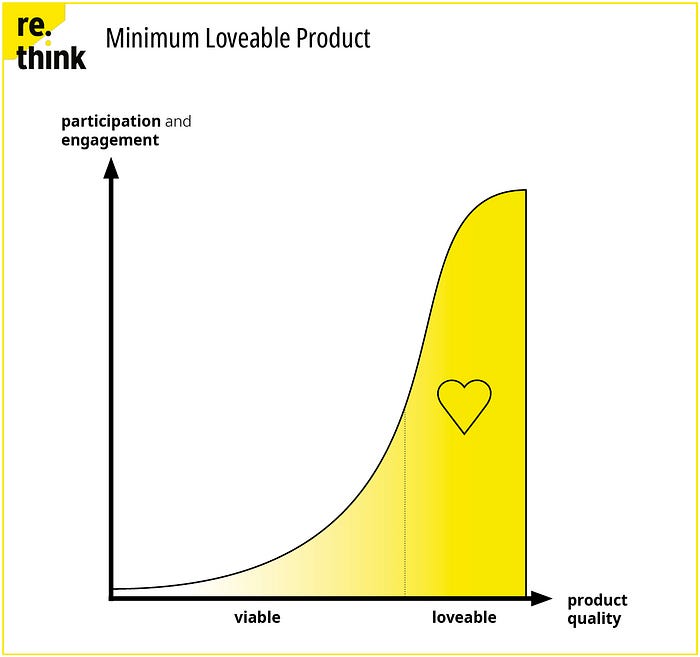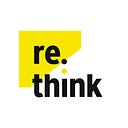The minimum loveable, but maximum transformational product.
The minimum viable product is not a new idea, but it’s not gone either. In many cases it should go. It’s simply not good enough — at least when it matters. Of course, if you develop a new consumer product that is not really important to the lives of people, go ahead and introduce a MVP, fail early, fail often and all that. But today, the real challenges we face are challenges of transformation. If you want to transform something, you need to involve the people, you need to motivate them, you need to empower them.
Transformation is hard.
It’s not easy for most people to change, change the way they work, think, approach problems. It’s stressful.
How willing are you to change for something that is just viable, but nothing more? How inspired are you by a minimum viable product? Do you go out of your way to support the necessary changes, support the transformation and the difficulties that come with it, just for something “viable”? Of course not. Minimum viable means a whole different thing when we talk about real problems that aren’t solved easily.
“We enable digital” wouldn’t be a slogan if it was easy. It’s not.
Digital transformation changes whole industries, changes all parts of our life and if we want to do it right we should change with it and not be changed by it. That is an endeavor of a different quality than usual product development.
If you confront people with a product that is only viable they might accept it, some might give you feedback if there is something missing, but many will simply shrug it off. Viable is not enough. The old way to do stuff is also viable. It’s not good, nor great, but everything works, right? Of course it doesn’t really, but it seems that way. That’s why your product or service needs to inspire. It needs to show a glimpse of what real transformation might look like, it needs to motivate people to put in the extra work, to break up their patterns.

That’s why we focus on the loveable, the awesome product. Yes, there needs to be some minimum version of it to get early feedback and it will be improved continuously anyway. To fulfill the purpose of the first iteration that you give your users, it needs to be meaningful. The user experience needs to be something they deeply care about, so they will support you and the further development process.
So why do people focus on viable products?
Most people only ask “how?”. But this is not the important question. You can solve the how. The really important question is “what?” and ultimately “why?” Figure out what the people need and why they need it by showing them something they can relate to, something where they can tell you if they love it or not.
This difference between the “how” and the “why” is also often known as “fit for use” and “fit for purpose”. If you solve the “how?” You get something that is fit for use, but only if you ask the “why?” you can design a solution that is also fit for purpose.
The key to all this of course is the user focus. If you want to create something lovable, you need to really focus on the users. That does not mean to do a few interviews that confirm your initial thoughts or ideas, but really understanding the people, what they do, how and why they do it and what drives them.
This deeply human centered approach is something you have to live, it needs to be part of your companies attitude, part of your DNA. Only then you have the chance to awe people with your early prototypes, to have even an early version of your solution being loveable, being awesome, being maximal transformational.
Ok, and what now?
Well, you could start with these three steps:
1. Use design thinking tools. Empathizing (or “understanding”) is the first phase of design thinking and offers lots of tools, tips and tricks how to see the world (and your product) with the eyes of the users and understand what they love and what might awe them.
2. Go to where the magic happens. Do not just invite your users for interviews, but go out and visit them, experience their life and help them with their problems or challenges. Get to know the people, offer them what they need and ask them to join you on your journey to loveable products.
3. Build your company around transformational products. The people developing new products need the freedom to really explore and dive into what the users love. Hierarchical product management hinders an open minded approach. Start by becoming an agile organization, aim to become a living one.
Of course the journey to loveable, transformational products is not necessarily an easy one, but there are people and companies that can help. We are one of them. We enable your business, mindset and technology transformation. Just send us an email — it only costs you a minute, but it might change your view completely.
written by: Kristof von Anshelm, Transformation Consultant at re:think Innovations
